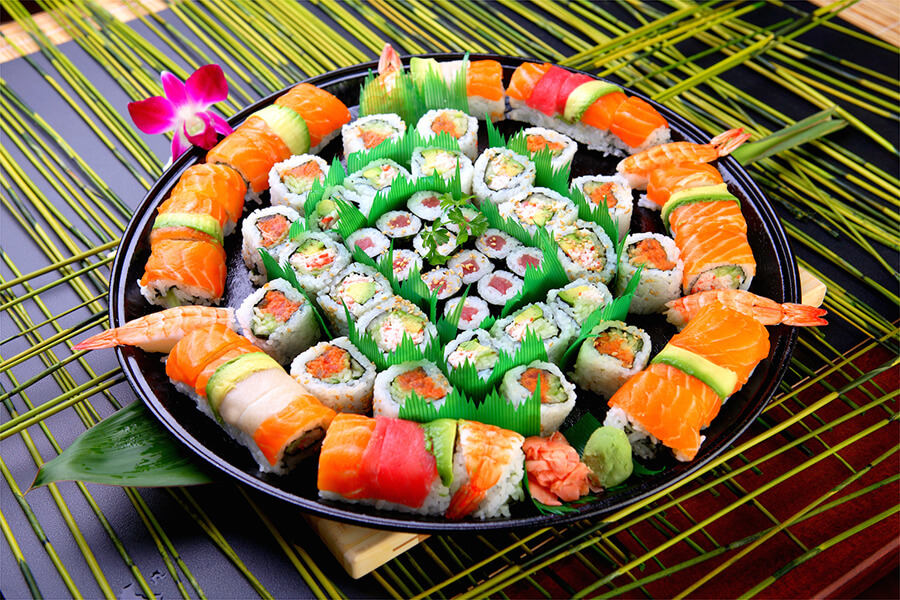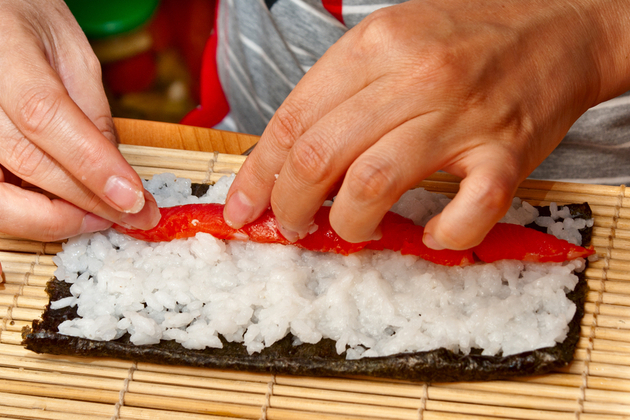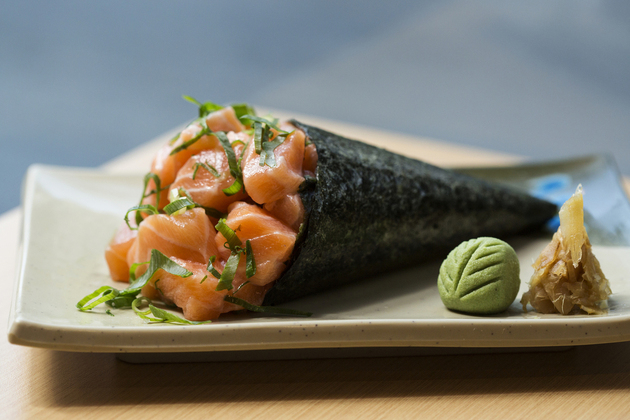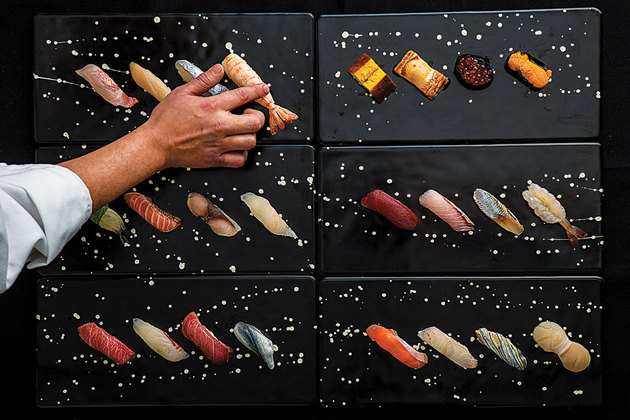Ingredients to Wrapped Sushi
Generally, many people think that sushi only has rice and seafood. However, this scrumptious dish is more than this. Only professional chefs who have made sushi or gourmets of sushi know that the rice used for making this dish is especially seasonal rice. Moreover, coming with the rice is one or some other ingredients such as special vinegar, salt, sugar, sake wine mirin, and so on. The common rice that used in a normal family meal in Asia is not preferred when making sushi. It must be short-grained, completely white, and have a good smell.
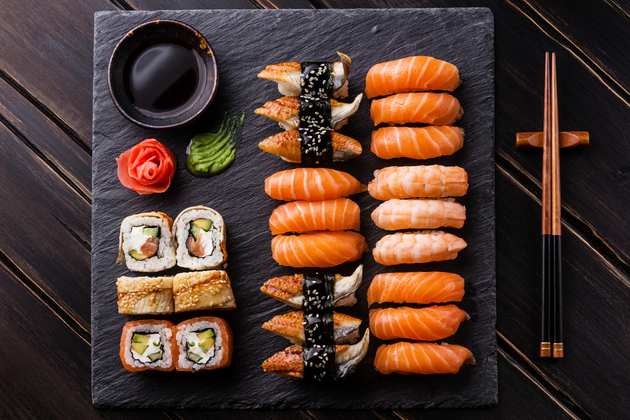
The Original of Sushi
Sushi is the traditional cuisine of Japan, but it does not mean that this dish came from “The country of sunrise”. The origin of sushi started with the earliest form as lacto-fermenting fish with salt and rice which is based on the paddy fields in the Mekong River flowing through Southeast Asia. This practice aimed to protect the rice and food from being rotten by using salt to preserve the freshness of food.
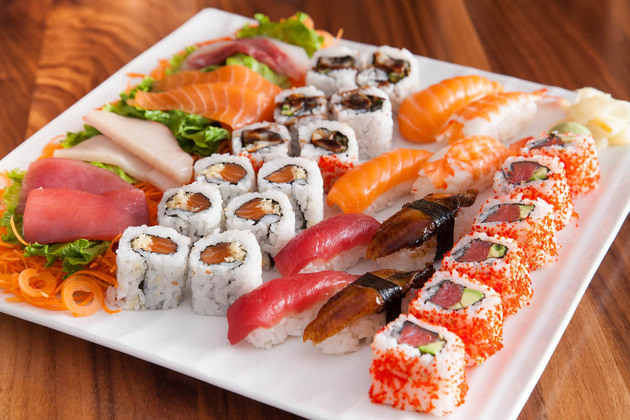
Types of Sushi
Foreigners usually feel surprised or a little bit confuse about choosing their favorite sushi when walking into a restaurant specializing in sushi. A great number of types that not everybody knows is far from their expectations. In point of fact, there are two popular types of sushi: makizushi - the traditional sushi rolls often with seaweed wrapper outside and nigiri-zushi - the cylindrical pieces of rice with a seafood topping. They even don’t know that just sushi rolls have many types such as rolled by seaweed wrapper, very slim omelet, or thousands of tiny shrimp eggs.
Other popular types include temaki – rice and topping wrapped in seaweed with cone-shaped, inari-zushi - rice wrapped in tofu pouches, oshizushi – looks like a rice and fish tiramisu, and chirashi-zushi - seafood spread over a bowl of rice.
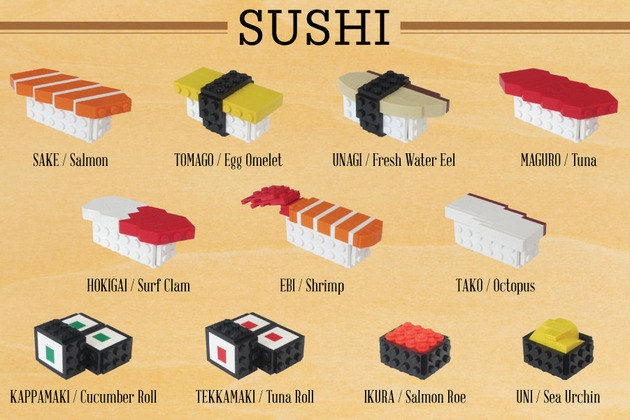
The Most Common Seafood Topping - Japanese Wrapped Traditional Sushi
The main ingredient for making a sushi is seafood. Seafood topping is really abundant from numerous species of fish including salmon, bluefin tuna, yellowtail, sea bream, and sardine to other species living underwater such as clam, squid, octopus, shrimp, scallop, more and more. One of the most popular fish sushi is rice topped with a slide of red tuna which is not expensive and rare to find. The most expensive tuna sushi is otoro – the fatty tuna serving as a special dish sampled at the end of the meal in high-end Japanese restaurants.
How to Make Sushi at Home
Ingredients for seafood sushi
255g/9oz sushi rice
55ml/2fl oz mirin (rice wine)
340g/12oz sashimi quality seafood, cut into long thin strips
5 sheets nori sushi sheets
1 cucumber cut into long pieces
5 spring onions
3 tsp wasabi paste
Soy sauce
Japanese pickled ginger
Quick steps to make sushi
Firstly, wash the rice clearly under water. When it drains, put into a pot with 1 pint of water. Cover up by a lid and boil for around 25 minutes. Cooked rice has the perfect white color, good smell, and softy. Wait 10 minutes to remove the heat. You can tip the rice onto a large flat clean tray in order to cool the rice down faster.
Land the bamboo mat in a flat, place a seaweed sheet on top. Spread a little rice over three fourth of the sheet until the rice layer is about 0.5cm thick. Remember to wash your hand before touching the rice to avoid sticky.
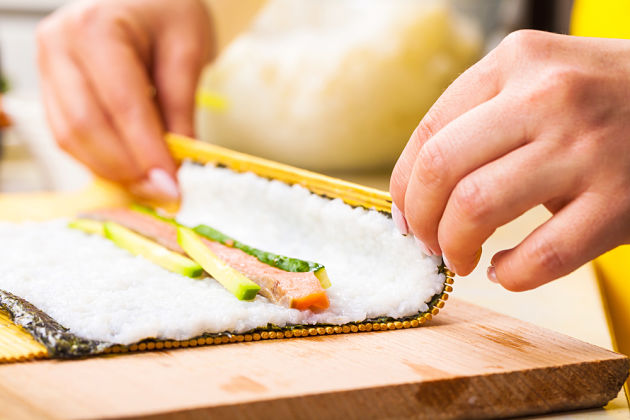
Dip a sharp knife into cold water and cut the sushi roll into easy-to-eat pieces. If you are not ready to serve sushi on a nice dish and sample immediately, wrap sushi in cling film and keep in a cool place, not in the refrigerator that the cold can dry out the rice. Sushi is best tasted with pickled red ginger, yellow radish, and soy sauce.

